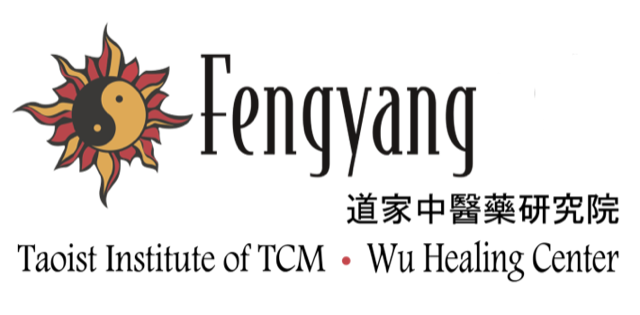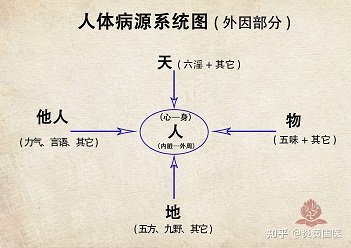Applying the “Five Movements and Six Qi” Theory of the Huangdi Neijing in the Clinical Prevention and Early Intervention of Cancer
Ming Wu , Ph.D.
I. Introduction to the Theory of “Five Movements and Six Qi”
The theory of the Five Movements and Six Qi (Wu Yun Liu Qi) is a core concept in the Huangdi Neijing (The Yellow Emperor’s Inner Classic), explaining the relationship between cosmic rhythms and human physiology and pathology.
• Five Movements (Wu Yun): Wood, Fire, Earth, Metal, and Water—representing Earth’s dynamic processes of transformation and metabolic regulation.
• Six Qi (Liu Qi): Wind, Cold, Summer-Heat, Dampness, Dryness, and Fire—representing celestial climatic forces and their pathological transformations.
This theory asserts that “Heaven and Earth combine their Qi, and all things are born.” Thus, the health and disease of the human body are closely linked to the cyclical and seasonal changes of nature.
II. Etiological Insight into Cancer through the “Unity of Heaven and Humanity”
In Traditional Chinese Medicine (TCM), cancer is seen as arising from internal imbalances—primarily deficiency of vital Qi and accumulation of pathological factors such as dampness, heat, phlegm, and blood stasis. The Suwen – Treatise on the Correct Qi of the Six Yuan states:
“In years of great climatic imbalance, epidemics and illnesses are bound to emerge.”
Although cancer is not an infectious epidemic, its increasing prevalence, chronicity, and systemic nature echo patterns of “external chaos entering the interior.” Thus, abnormal Yun Qi can be viewed as a macro-environmental trigger influencing tumor development.
Some relevant correspondences include:
• Excessive Fire Movement: Leads to internal heat, yin deficiency, and toxic accumulation—commonly seen in cancerous terrain.
• Insufficient Damp Movement: Results in dampness retention, phlegm accumulation, and turbid stagnation—considered a root of tumor formation.
• Wind-Wood Overaction: Reflects emotional disturbances, liver Qi stagnation, and Qi-blood blockages—contributing to nodules and masses.
• Dry-Metal in Command: Injures fluids, depletes yin, and promotes inflammatory degeneration.
By understanding cancer in the context of cyclical celestial influences, we gain insight into its environmental origins and potential windows for early intervention.
III. Integration of “Five Movements and Six Qi” with TCM-Based Cancer Prevention (“Zhi Wei Bing”)
1. Aligning with Seasonal Energies to Regulate Internal Qi Dynamics
By calculating the Yun Qi pattern of a given year, TCM practitioners can forecast dominant pathogenic trends (e.g., excess damp-heat, dryness, wind) and implement anticipatory lifestyle and herbal strategies.
• In years of Excess Fire Movement, nourish Liver and Heart yin, and avoid spicy, warming foods.
• In years dominated by Dampness, strengthen the Spleen and eliminate dampness with foods like Coix seeds, Poria, and aged tangerine peel.
• In Wind-Wood excessive years, emphasize emotional regulation and Liver Qi soothing.
• In Dry-Metal governed years, nourish yin and moisten the Lungs with lily bulb, glehnia root, and ophiopogon.
2. Personalized Risk Stratification Based on Yun Qi and Body Constitution
Every individual has a unique body constitution that interacts differently with annual climatic patterns.
• People with yin deficiency and heat-prone constitutions are more likely to develop inflammation-related tumors during Fire-dominant years and should take preventive cooling measures.
• Individuals with phlegm-damp constitutions are more susceptible to tumorigenesis in Damp years and benefit from early Spleen-fortifying interventions.
• Those with emotional stagnation or depressive tendencies may face higher risks of hormone-related or hepatic tumors in Wind-Wood dominant years.
A combined approach using constitutional assessment and Yun Qi forecasting enables individualized early-stage cancer prevention.
3. Herbal and Lifestyle Therapies: “Responding to Nature, Supporting the Deficient, Dispersing the Excess”
• Herbal strategies: Drawn from Suwen chapters on Yun Qi dynamics—e.g., Sheng Di, Zhi Mu, and Huang Lian for Excess Fire; Bai Zhu, Fu Ling, and Yi Yi Ren for Dampness.
• Lifestyle strategies: Align with seasonal nourishment principles—Spring nourishes the Liver, Summer clears Heart Fire, Autumn moistens the Lungs, and Winter strengthens Kidney Yang—thereby preventing internal imbalances from becoming pathogenic.
⸻
IV. Modern Applications and Innovations in Cancer Prevention Based on Yun Qi Theory
1. Creating Annual “Oncological Yun Qi Maps”
Integrate traditional Yun Qi calculations with modern climate data to predict which types of cancers may be more prevalent each year (e.g., inflammation-driven tumors in Fire-dominant years), and implement early screening and community-based prevention programs.
2. Promoting “Seasonal Dietetics + Yun Qi-Based Care”
Use the 24 solar terms, Yun Qi patterns, and individual constitutions to guide dietary and lifestyle recommendations:
• From Grain in Ear (Mangzhong) to Great Heat (Dashu): focus on dampness and heat-clearing diets.
• From White Dew (Bailu) to Frost Descent (Shuangjiang): emphasize yin nourishing and lung-protecting practices to reduce risks of respiratory system cancers.
3. Yun Qi Education and Preventive TCM Clinics
Develop accessible TCM-based “preventive care clinics” and seasonal health education programs that translate classical insights into actionable modern strategies, making “Zhi Wei Bing” (treating before illness) a tangible public health practice.
⸻
V. Conclusion: Harmonizing with Heaven, Guiding Treatment with Yun Qi, and Reshaping Cancer Prevention in TCM
The theory of Five Movements and Six Qi embodies TCM’s “unity of Heaven and humanity” worldview. It not only deepens our understanding of disease origins but also offers a macro-micro integrated system for true preventive medicine. In the face of rising cancer rates, this ancient framework can guide predictive, preventive, and personalized strategies that reflect the natural rhythms of life.
Rooted in the wisdom of the Huangdi Neijing, TCM can move beyond treating disease to detecting subtle imbalances and intervening before pathology manifests—ushering in a new paradigm of integrative oncology grounded in Eastern philosophy and cosmology.
References
1. Huangdi Neijing Suwen (黄帝内经·素问). Annotated by Ma Zhi (马莳注), People’s Medical Publishing House, Beijing, 2005.
2. Lu, G.D., & Needham, J. (1980). Celestial Lancets: A History and Rationale of Acupuncture and Moxa. Cambridge University Press.
3. Deng, T.T. (邓铁涛). (2002). Yunqi Xue Jiangyi (《运气学讲义》). Guangzhou University of Chinese Medicine Press.
4. Wu, M.J. (吴明杰). (2023). The Inner Path: A Daoist and Chinese Medicine Guide to Healing and Balance. Balboa Press.
5. Unschuld, P. U. (2016). Huang Di Nei Jing Su Wen: An Annotated Translation of Huang Di’s Inner Classic - Basic Questions. University of California Press.
6. Liu, Y. & Wang, Y. (2015). “Application of Five Yun and Six Qi Theory in Preventive Treatment of Chronic Diseases.” Journal of Traditional Chinese Medicine, 56(9): 768–771.
7. Jiang, M. & Zhang, Q. (2017). “Modern Interpretation and Clinical Application of Yun Qi Theory in Tumor Prevention.” Chinese Journal of Integrative Medicine on Oncology, 27(4): 250–254.
8. Zhou, X. & Chen, S. (2020). “Climate Change, Yun Qi Patterns and the Epidemiology of Cancer: A Correlative Study.” World Journal of Traditional Chinese Medicine, 6(3): 141–148.
9. Xu, H., & Yang, Y. (2012). “Understanding ‘Zhi Wei Bing’ (Treating Disease Before It Arises) in the Context of Integrative Medicine.” Chinese Journal of Integrative Medicine, 18(11): 820–824.
10. Li, Z. (2019). “The Relevance of the Five Movements and Six Qi in the Prevention of Modern Chronic Diseases.” Shanghai Journal of Traditional Chinese Medicine, 53(7): 5–9.




